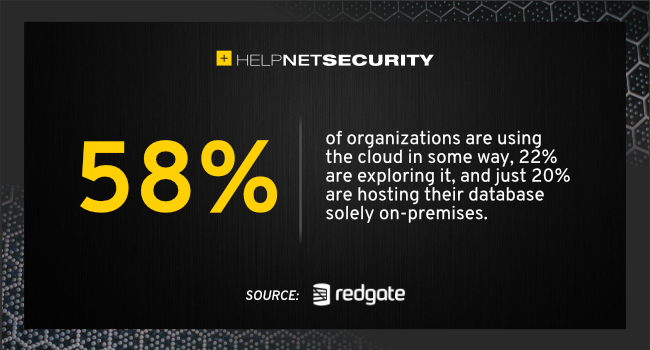Why is a well thought-out approach to cloud migration imperative?
The big move to the cloud is bringing as many challenges as opportunities, a database monitoring survey from Redgate has found.

With 80% of organizations now using a mix of cloud and on-premises database environments, the survey shows that the focus of data professionals is shifting to addressing the difficulties of migrating to the cloud ahead of improving the performance of their database estates.
There is not one cloud, there are many
An insights report from the survey shows that 58% of organizations are using the cloud in some way, 22% are exploring it, and just 20% are hosting their database solely on-premises. There is not one cloud, however, there are many, with the 2021 State of the Cloud Report from Flexera revealing that organizations now use an average of 2.6 public clouds and are experimenting with an additional 1.1.
As a result, 76% of respondents to the monitoring survey stated monitoring a hybrid database environment was important to their business, up from 44% in the same survey a year earlier. This is further exacerbated by the growth of server estates, with an earlier insights report from the survey showing that 65% of DBAs have seen the number of instances they manage increase over the last year. In previous surveys, the majority stated they managed between one and nine relational databases but in 2021, this rose to 20-49.
The complexity comes when managing and monitoring these multiple databases on many different platforms, whether on-premises or on the big three cloud providers, AWS, Microsoft Azure and Google Cloud. The Flexera report showed that while the majority of organizations have a multi-cloud strategy, only 42% use multi-cloud management tools.
This ties in with Redgate’s survey, which found that only 44% of organizations use paid-for database monitoring tools. A further 35% use tools that are built in-house which, while typically sufficient for small on-premises estates with ten servers or less, cannot handle growing estates, connect to the cloud, or handle multiple cloud environments.
The move to the cloud bringing challenges
To avoid problems and manage the move to larger, hybrid estates, organizations need a way to monitor everything, from local servers and virtual machines to cloud instances and services, whatever flavor of cloud they opt for. Having one single view of hybrid SQL Server environments is key to keeping processes running efficiently, and moving the focus back to improving the performance of database estates.
As Grant Fritchey, Microsoft Data Platform MVP and Redgate Advocate, concludes: “With all this in mind, as you continue your work in the cloud, or, as you begin your move to the cloud, assume you’re likely to experience a hybrid scenario. Most organizations are going to need to keep an eye on their systems, even though those systems are both on-premises and in some sort of cloud situation. Planning for this hybrid situation just makes the whole process a little easier.”